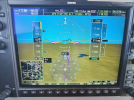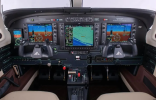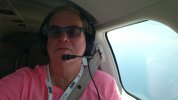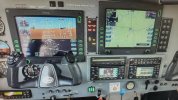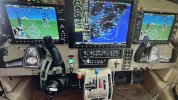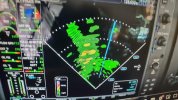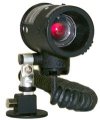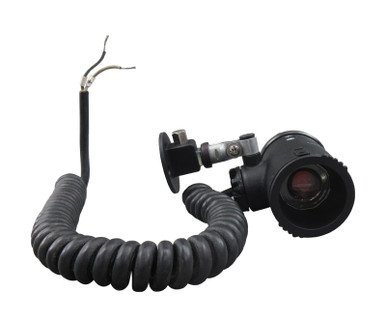I have a few hundred hours in a 2010 Matrix, all in the last few years. Random thoughts in no logical order:
Big caveat - I don't own it, so I can't really talk about costs. I'm just the pilot.
Compared to a Mooney Ovation (which I have not flown), it's not going to go much faster and certainly not more efficiently! It is bigger though.
It's a decent airplane, but in my opinion really hampered in its utility due to the lack of pressurization. Piper's intent, after all, when they took a Mirage and removed the pressurization system, was to make a cheaper upgrade to Bonanzas and Mooneys. In my opinion, though, the pressurization IS a major appeal of the PA-46 line. So removing it makes it not really that much of an upgrade from the Bos and Mos.
Okay, so obviously it's bigger than either. The back is far more comfortable. If the main purpose for purchasing it instead of a Mo/Bo is for passenger comfort, it definitely wins that (although if passenger comfort is REALLY important, and you can swing the extra cost for a Mirage or straight Malibu, that's always a game-changer). To this point, as far as I have been informed, pretty much the ONLY difference between the Matrix and the Mirage is the pressurization system and a couple minor things like air vents. Everything else is the same. So, barring pressurization problems, I'd imagine the maintenance costs between the two are pretty much identical.
It still has the twin turbos of the pressurized models, so it CAN still go up to the 20's. But of course that requires oxygen (for which there is an on-board bottle). My flights in it have not required me to go that high, so I usually cruise at anywhere from 6000 (if to avoid headwinds) to 12,000.
TAS is around 170 at lower altitudes, 185 or so at 12,000, and reportedly gets up to 200 up at FL200. This at "normal cruise" power of 30"/2400 rpm and around 22 gph.
Piper discontinued the line in 2014 or so, I believe due to lack of demand. 200-ish were built. I imagine they are selling at a bit of a discount compared to similar-vintage Mirages. For my main flights in them (300 nm flights between two airports in the central U.S. with one passenger who sits in the back), it works just fine.
Like most planes, you can't fill the tanks and the seats. With full tanks (120 gallons), it's effectively a three-adult aircraft. But, that fuel will take you a pretty long way. So NOT topping it off is routine.
Insurance - this airplane is an unpressurized, single-engine piston. But the insurers lump it in with the pressurized versions (because they're all PA-46s), and require formal initial training and generally recurrent training as well. Now, I am a big fan of recurrent training in general, but this airplane isn't that hard to fly. I think the insurance requirements are over the top on this model.
As far as flying goes - it's not a short-field performer. I operate it regularly into a 4000 ft runway at 2800 ft elevation, and it does fine at max gross. But there's not a TON of extra runway. 3000 ft would be tight, and warrant running the numbers. Otherwise it's a good-flying airplane. Speed brakes can come in useful, as does the high 10 deg flap and gear speeds (165 kts) which means you can almost always lower them. Over the fence speed is about 80-85, so nice and slow (but it's a heavier airplane than others of similar speed, so it takes longer to stop).
Wingspan is longer than similar airplanes. Hangar size may be an issue.
The place to go for all kinds of good PA-46 information is Casey Aviation at
https://flycasey.com/ . That's where I did my initial training. Also, highly recommend is their podcast, the Malibu Guru podcast, available on all the normal podcast players. It isn't JUST about PA-46s, but is primarily about them. Even though the Matrix isn't mentioned specifically very often (although I believe they did a fairly recent episode covering it), almost all of the advice for the Malibu/Mirage applies as well. And he does cover the turbine versions as well, which will definitely make you want one.
One thing about maintenance - it seems that most PA-46 owners do take their planes to specialized PA-46 shops for annuals and major maintenance. I interpret this to mean that the average A&P who works on Cessnas and PA-28s and Bonanzas doesn't have much experience with PA-46s. But that's just my interpretation. Our annuals are done at HUT, Hutchinson, KS, at Midwest Malibu, but there are several other specialty shops around the U.S.
Oh yes, getting in - it's nice to have the air stairs on the back. Great for the passengers. But for the pilot, it's definitely somewhat acrobatic getting up into the front seat. I'm 6'2 (and I believe Joe Casey is 6'3" or 4"), so it can be done but there is definitely a method that each person learns for themselves. You have to step over the wing spar that's just behind the front seats. Even if you're not quite as tall, it still requires some practice.
184 ktas at 11,500, ISA + 29, power settings as mentioned above:
View attachment 121920

